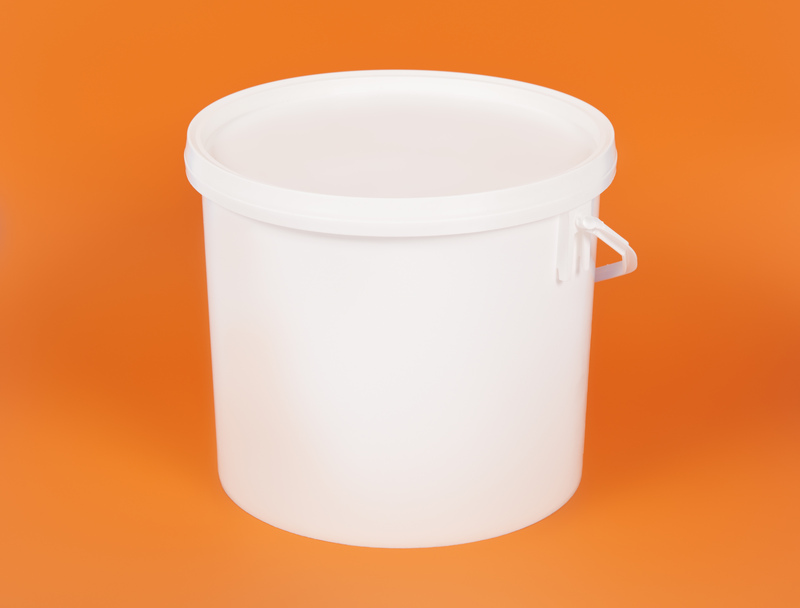Important Considerations for Freezer Storage in the Off-Season
When the peak harvest ends and colder months arrive, the freezer becomes a vital storage solution for preserving food and maintaining kitchen efficiency. However, off-season freezer storage comes with its own unique set of challenges. Proper management and strategic planning are crucial for both food safety and optimal usage. In this comprehensive article, we'll explore key factors to ensure your off-season freezer storage remains effective, organized, and sustainable.
Why Off-Season Freezer Storage Matters
Many households use freezers to store surplus produce, meat, baked goods, and meals when demand is low or gardens are dormant. Utilizing your freezer effectively during the off-season can:
- Reduce food waste by extending shelf life
- Capture seasonal flavors and improve menu variety year-round
- Optimize grocery spending by buying in bulk or taking advantage of sales
- Save time with meal prepping and make-ahead options
But without proper planning, you risk freezer burn, loss of quality, or even food safety hazards. Let's deep dive into the most important considerations for off-season freezer storage.

1. Assessing Your Freezer Storage Needs
Evaluate Current Inventory
Begin by taking stock of what you currently have in your freezer. Remove everything, check for expired or freezer-burned items, and organize similar foods together.
- List the types and quantities of items you use most often.
- Identify space occupied by forgotten or redundant foods.
- Consider the shelf life of each item, especially if stored for several months.
This step allows you to plan your off-season storage strategy more effectively and prevent clutter from diminishing your freezer's capacity.
Project Seasonal Storage Needs
Do you anticipate an influx of certain foods, such as post-holiday turkeys or a summer's worth of berries? Estimate the volume and types of foods you'll need to freeze during the off-season, and base your storage plan around these forecasts.
2. Food Preparation: Best Practices Before Freezing
Blanching and Pre-Cooking
Some vegetables and fruits benefit from blanching--a brief dip in boiling water followed by rapid cooling--prior to freezing. This process:
- Preserves color, flavor, and nutritional value
- Reduces enzyme activity that leads to spoilage
- Keeps texture appealing after thawing
Breads, casseroles, and leftovers should be cooled completely to avoid raising freezer temperatures or creating condensation, which can encourage ice crystal formation.
Portion Control and Packaging
Divide foods into cooking or serving-sized portions using freezer-friendly bags, vacuum sealers, or tightly-lidded containers to minimize exposure to air.
- Individually wrap items or use parchment paper between layers
- Squeeze out excess air to decrease freezer burn risk
- Clearly label all items with the name and freezing date
3. Choosing the Right Containers and Materials
The right packaging is a top priority for safe and efficient off-season freezer storage. Consider the following options:
- Heavy-duty freezer bags - Great for fruits, vegetables, and small cuts of meat
- Vacuum-sealed bags - Maximize storage time and space, ideal for long-term storage
- Plastic containers - Use those labeled "freezer-safe"; best for soups and sauces
- Glass containers with airtight lids - Eco-friendly and reusable, but leave headspace for expansion
- Aluminum foil and freezer paper - Good for wrapping baked goods, steaks, or prepared meats
Never use thin plastics or containers not meant for the freezer, as these can crack, break, or leach chemicals into your food over time.
4. Preventing Freezer Burn and Quality Loss
What is Freezer Burn?
Freezer burn occurs when air comes into contact with frozen food, causing dehydration and oxidation. This appears as grayish spots, desiccated textures, or flavor loss.
How to Prevent It
- Use airtight packaging and remove as much air as possible.
- Maintain a consistent freezer temperature at or below 0?F (-18?C).
- Avoid frequent opening of the freezer, which introduces warm air and moisture.
- Organize foods so older items are used first (FIFO: First-In, First-Out principle).
Tip: If your freezer is mostly empty in the off-season, fill unused space with bags of ice or containers of water. This helps stabilize temperature and reduces freezer cycling.
5. Freezer Storage Safety Guidelines
Proper Temperature Settings
The ideal freezer temperature is 0?F (-18?C) or below. At this temperature, food remains safe indefinitely, though quality may decline if stored too long.
- Use an appliance thermometer to verify temperature accuracy.
- Don't overload your freezer, which can block air circulation and lead to uneven temperatures.
- If the freezer will be accessed infrequently in the off-season, consider slightly lowering the temperature to compensate for less usage.
Safe Thawing Techniques
When removing items for use, thaw them safely using cold water, microwave, or refrigerator methods. Never thaw frozen foods at room temperature, which encourages bacterial growth.
6. Organization Tips for Off-Season Freezer Storage
Efficient Labeling and Inventory
- Label every package with the contents and freeze date.
- Maintain an inventory sheet on or near the freezer door, updating as items are added or removed.
- Group similar foods (vegetables, fish, prepared meals, baked goods) in designated areas or bins.
Well-organized freezer storage simplifies meal planning and prevents food from lingering past its prime.
Maximize Space
- Stack items flat whenever possible.
- Use baskets or bins to keep smaller items from being lost at the bottom.
- Rotate older items to the front during off-season slowdowns, using up last season's inventory first.
7. Cleaning and Maintenance During the Off-Season
The off-season is a perfect opportunity for routine freezer cleaning and maintenance. To keep your appliance running efficiently and hygienically:
- Defrost manual-defrost freezers if more than 1/4 inch of ice builds up on the walls.
- Clean the interior with mild soap and water; avoid bleach or harsh chemicals that could linger on stored foods.
- Check gaskets and seals for cracks or leaks.
- Vacuum the coils at the back or bottom to improve energy efficiency.
A clean, well-maintained freezer runs more efficiently, saves energy, and protects your stored food.
8. Energy Savings and Freezer Efficiency in the Off-Season
Energy-Efficient Practices
- Keep the freezer at least two-thirds full (use containers of water if necessary).
- Minimize the number and duration of door openings.
- Ensure your freezer is in a cool, dry location away from heat sources.
- Regularly inspect and replace worn door gaskets for a tight seal.
- Consider upgrading to an ENERGY STAR certified freezer if your unit is more than 10 years old.
Dealing with Extended Low Usage
If you expect your freezer to remain mostly unused during the off-season, you might choose to consolidate items and unplug a secondary freezer to save energy. Clean and dry the unplugged unit thoroughly, and prop the door open to prevent mold or odors.
9. Special Storage Considerations for Various Foods
Fruits and Vegetables
- Blanch most vegetables before freezing; exceptions include onions and peppers.
- Fruits freeze better with a little sugar or syrup and spread out on trays before packing to prevent clumping.
Meat and Poultry
- Wrap tightly to prevent moisture loss and freezer burn.
- Use within recommended timeframes for best quality (3-12 months, depending on the cut).
Prepared Foods and Leftovers
- Cool before freezing to avoid ice crystal formation.
- Divide into serving-sized containers for quicker, safer thawing.
Bakery Items
- Double wrap breads and pastries to prevent drying out.
- Thaw at room temperature or gently reheat in the oven for best results.

10. Planning Ahead for Next Season
The off-season is ideal for evaluating your freezer usage patterns. What worked well? What would you change? Consider tracking:
- Which items you used first and those you struggled to use up
- Instances of freezer burn or quality loss
- Energy costs and maintenance needs
With each off-season, you'll refine your freezer management strategy--making next year even more streamlined, sustainable, and economically sound.
Conclusion: Mastering Off-Season Freezer Storage
Freezer storage during the off-season requires intentional planning, diligent organization, and practical maintenance. By evaluating your inventory, preparing foods correctly, using appropriate containers, maintaining food safety, and maximizing energy efficiency, you'll preserve the quality and safety of your food while saving time and money.
Remember: Regularly check your frozen goods, update your inventory, and adapt your storage methods as your household needs change. If you approach off-season freezer storage with a well-informed strategy, your freezer will remain one of your kitchen's most valuable assets all year long.
Key Takeaways:
- Assess, organize, and label freezer items every season.
- Prepare and package foods properly before freezing.
- Monitor freezer temperatures and prevent freezer burn.
- Conduct regular maintenance for food safety and energy savings.
- Track your patterns to improve next season's storage plan.
By following these important considerations for freezer storage in the off-season, you can be confident that the food you save today will nourish you tomorrow--deliciously and safely.



